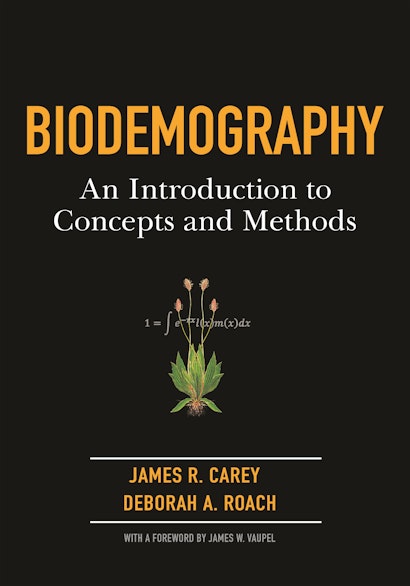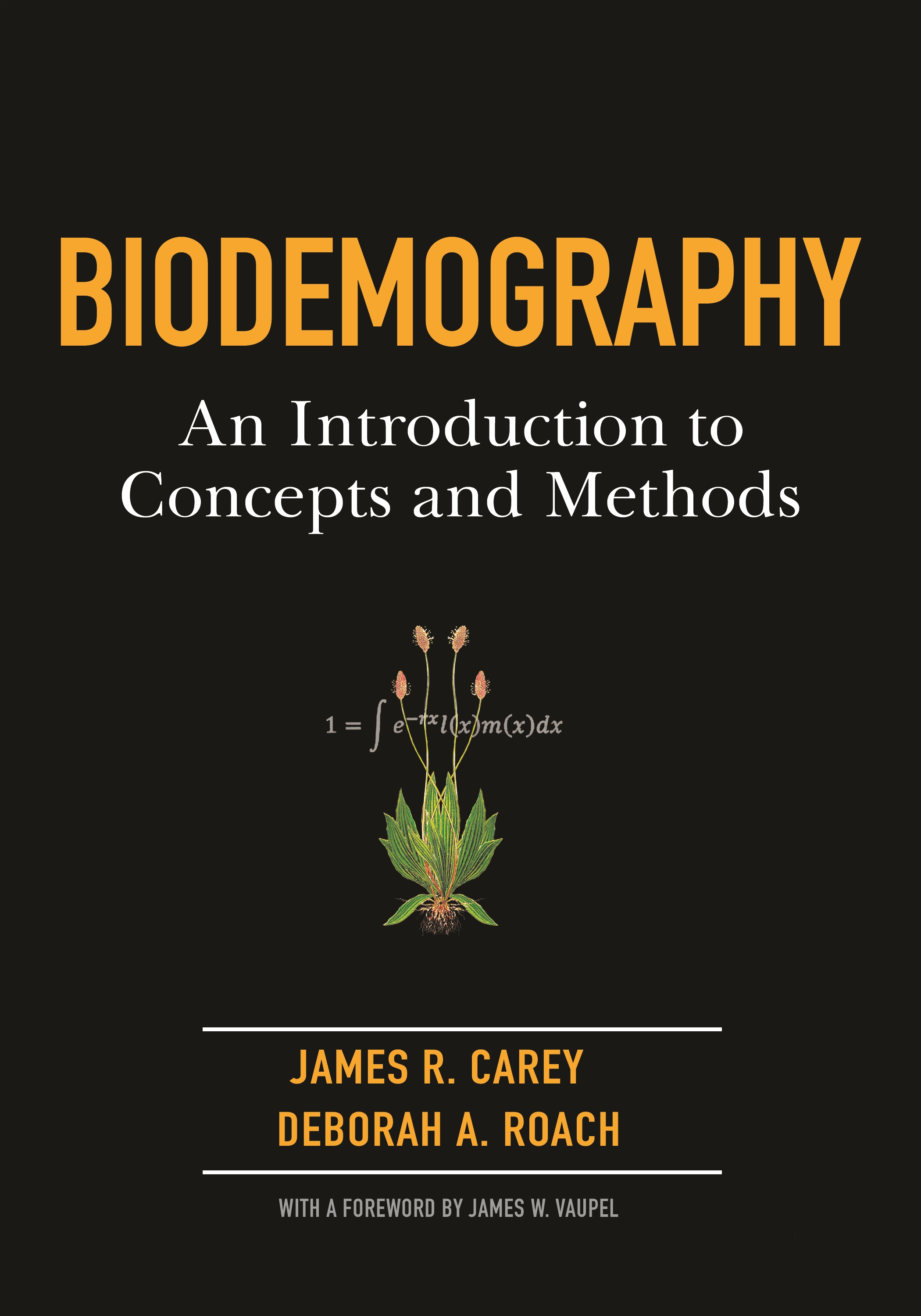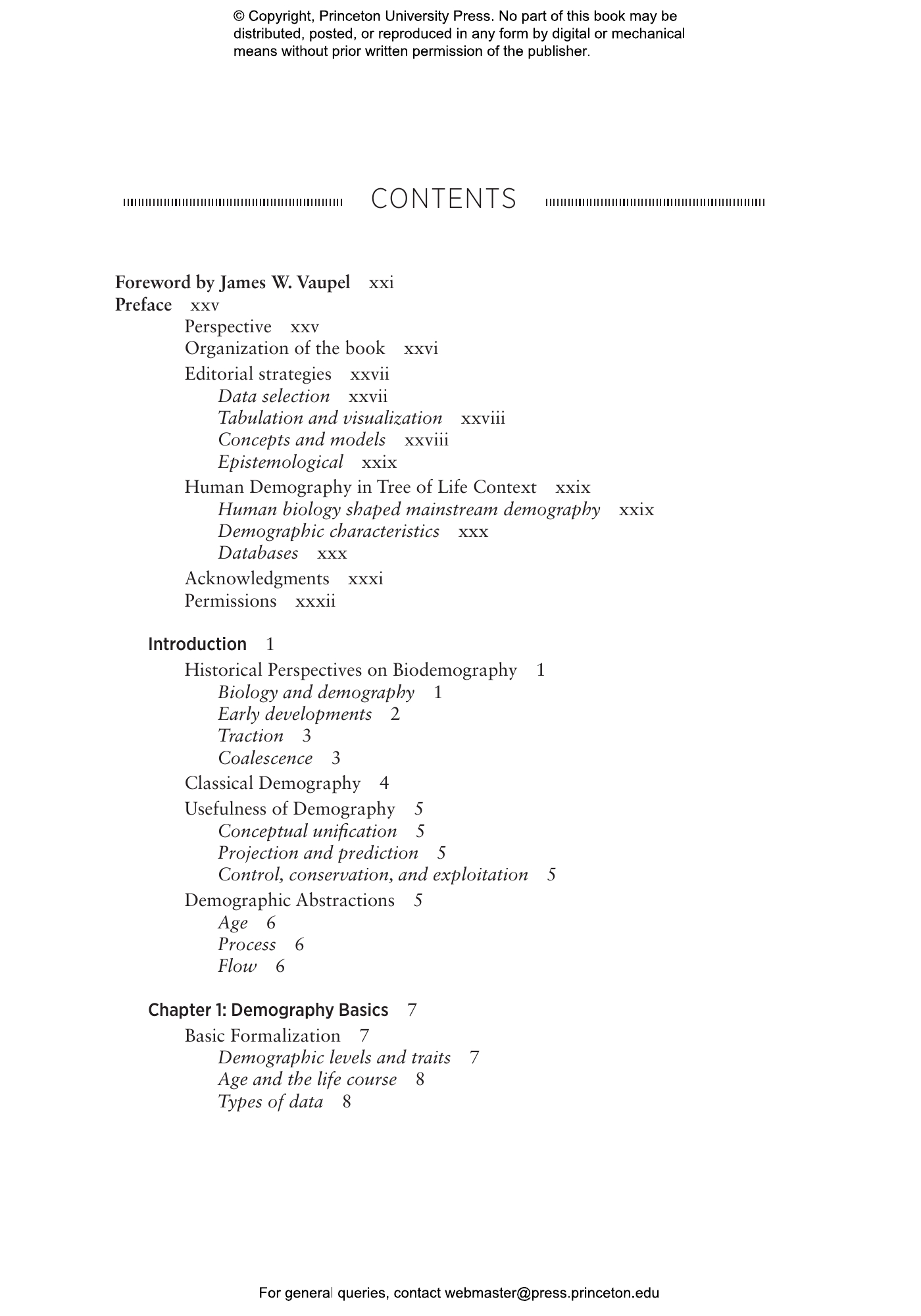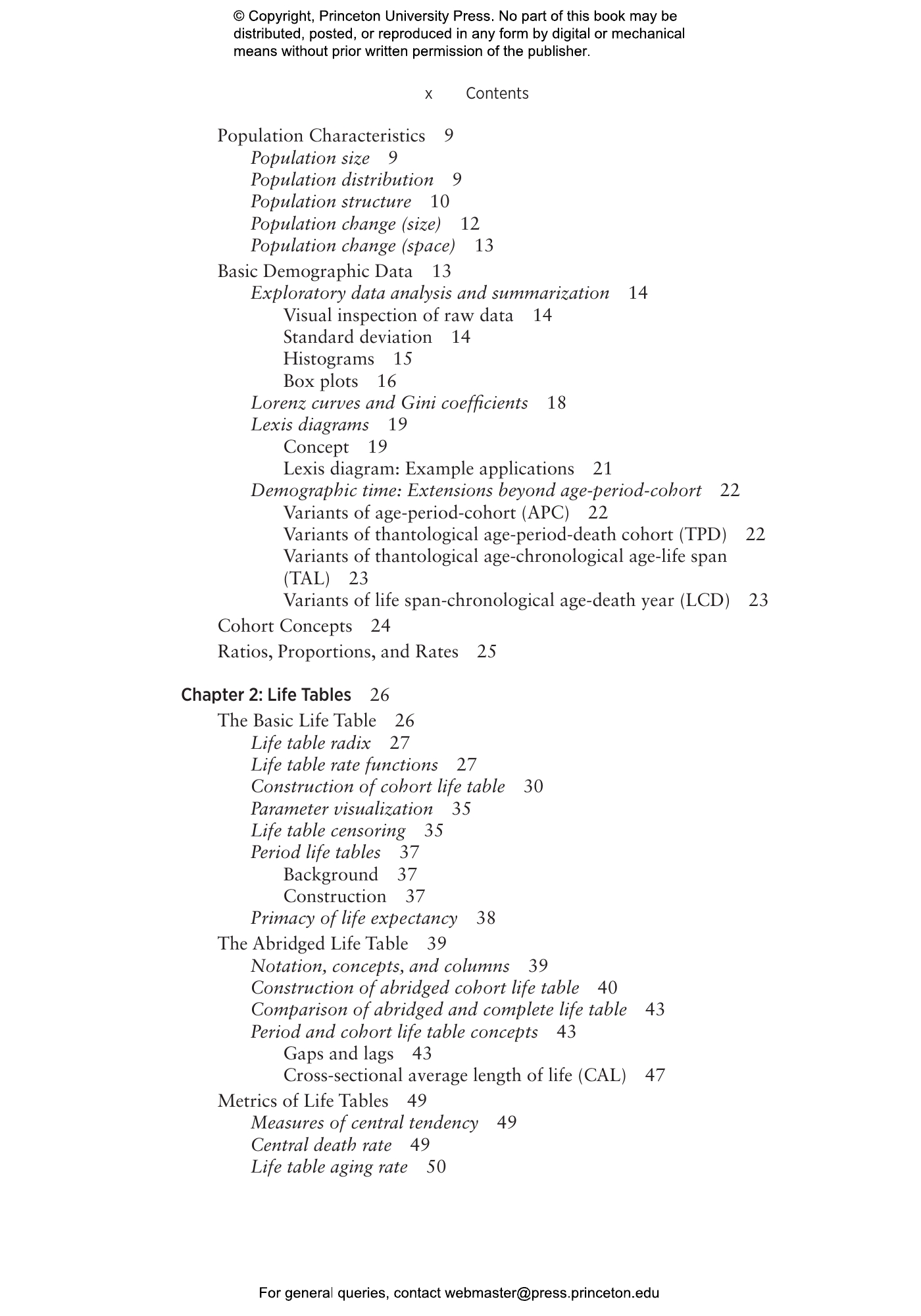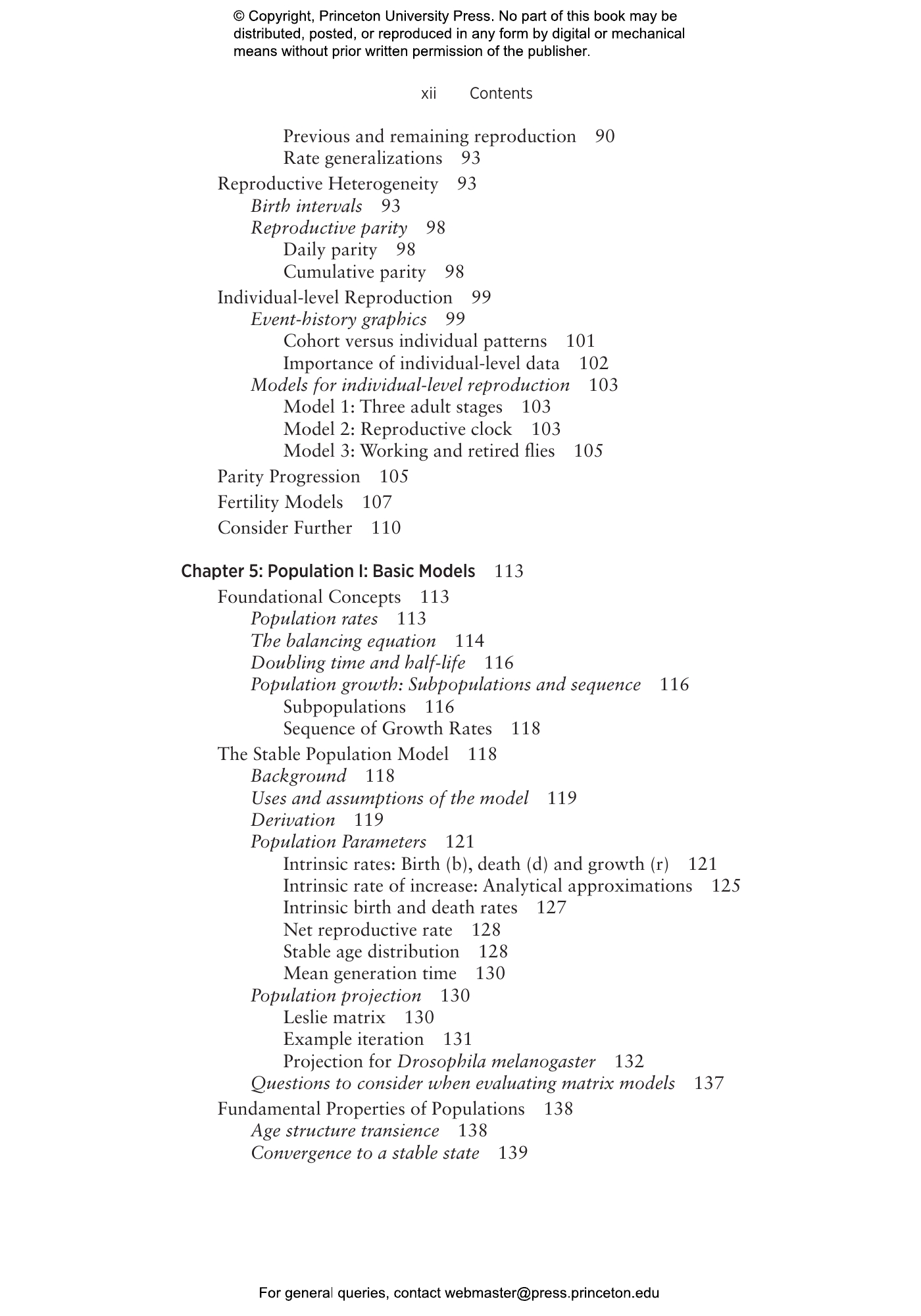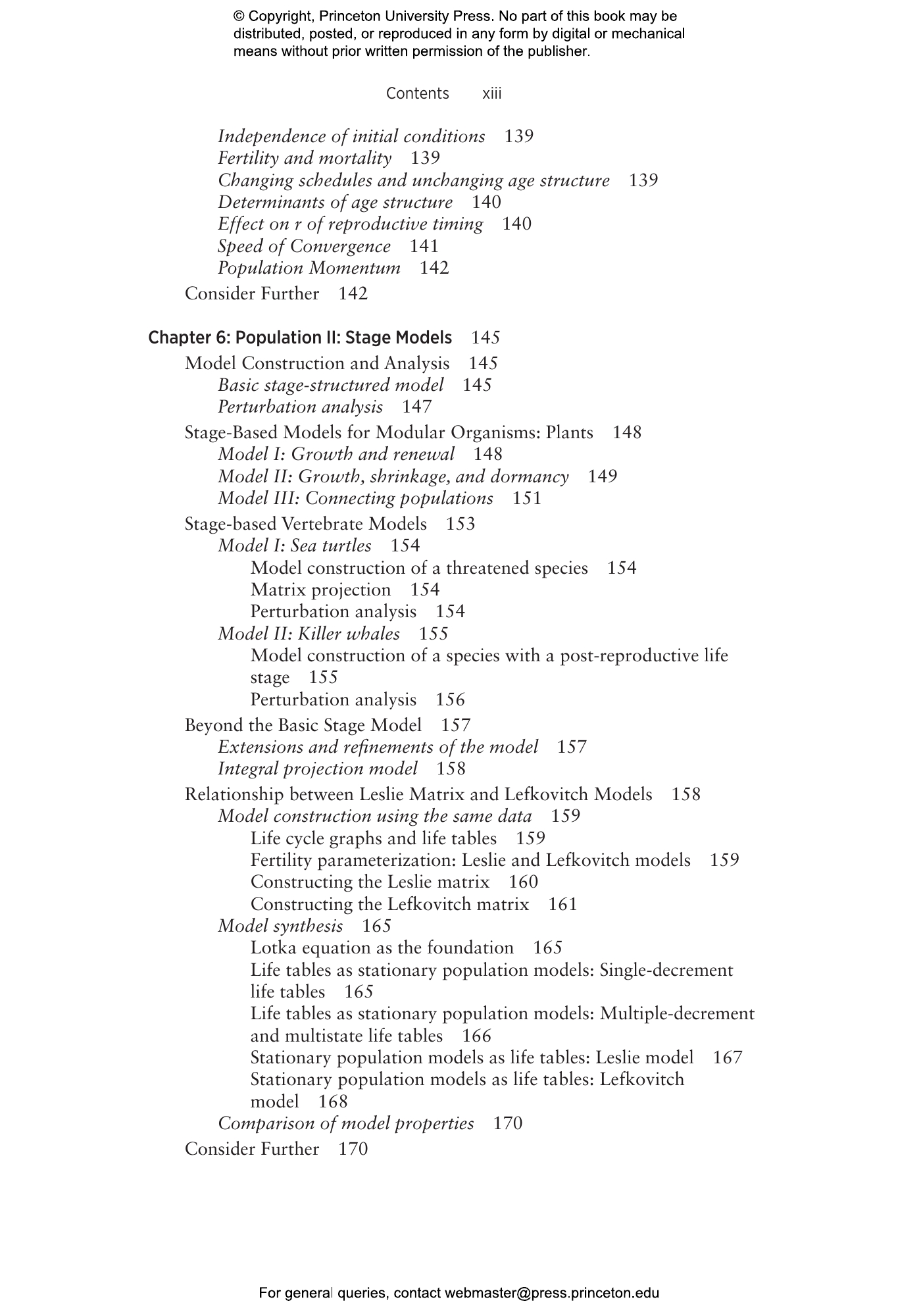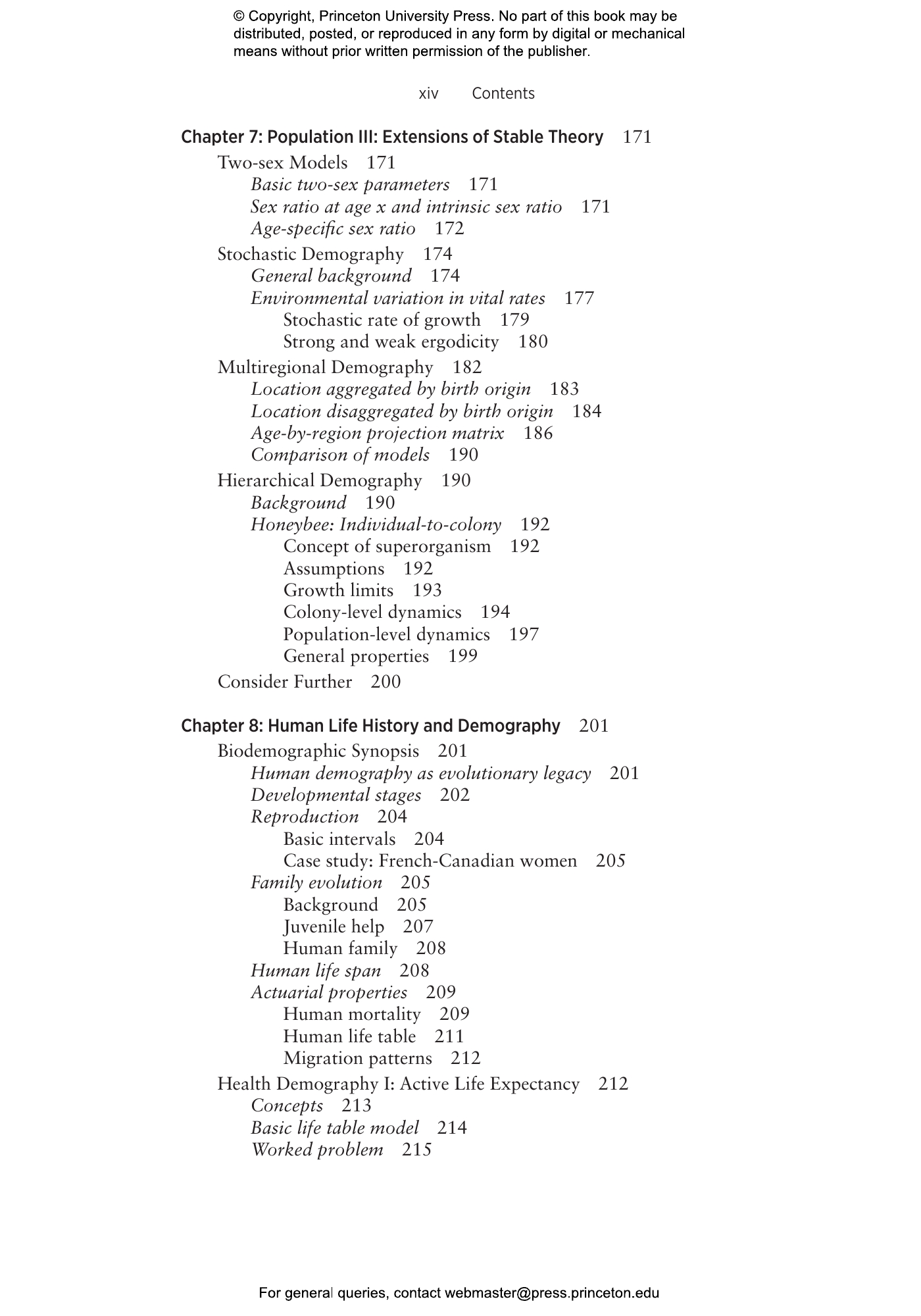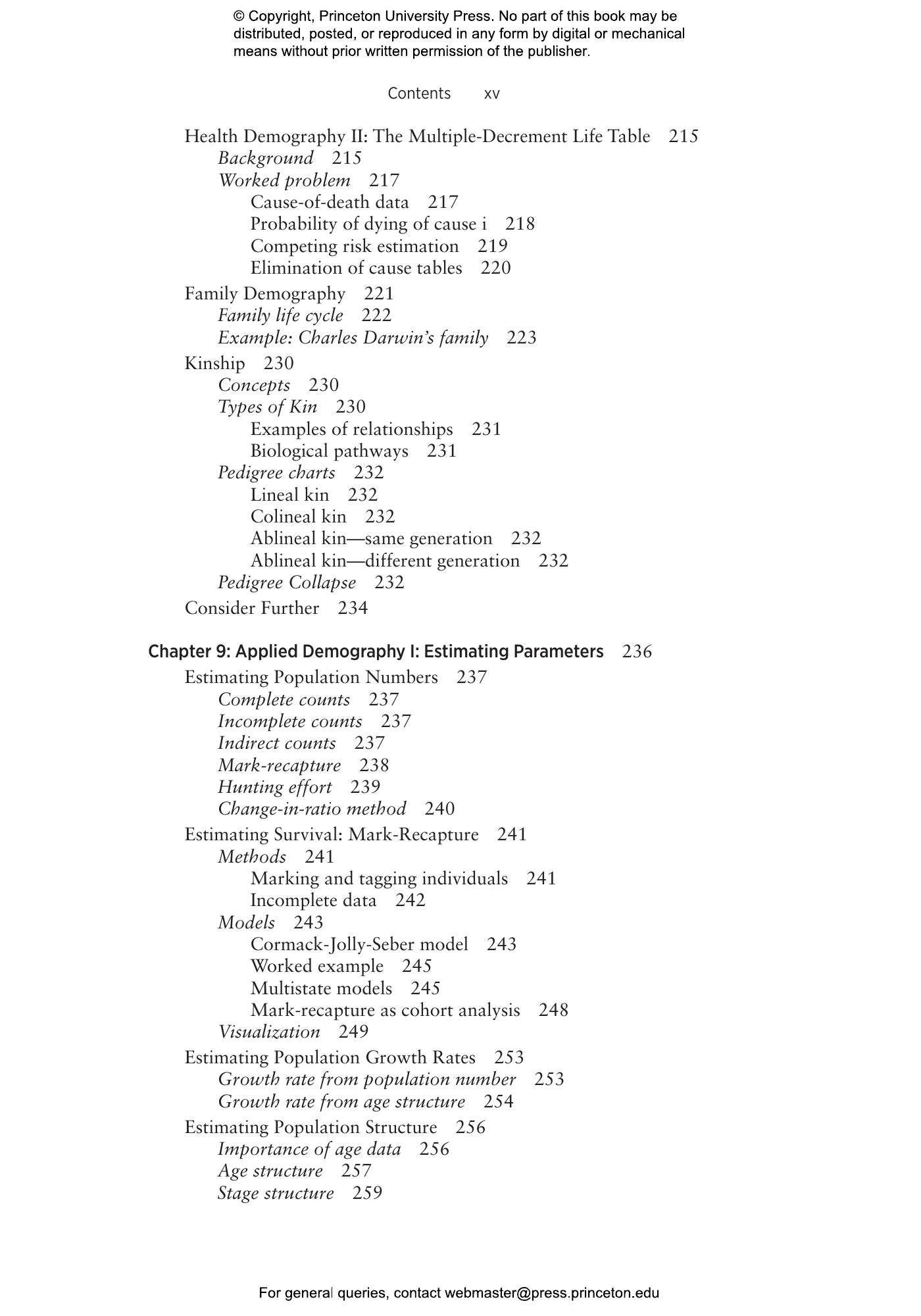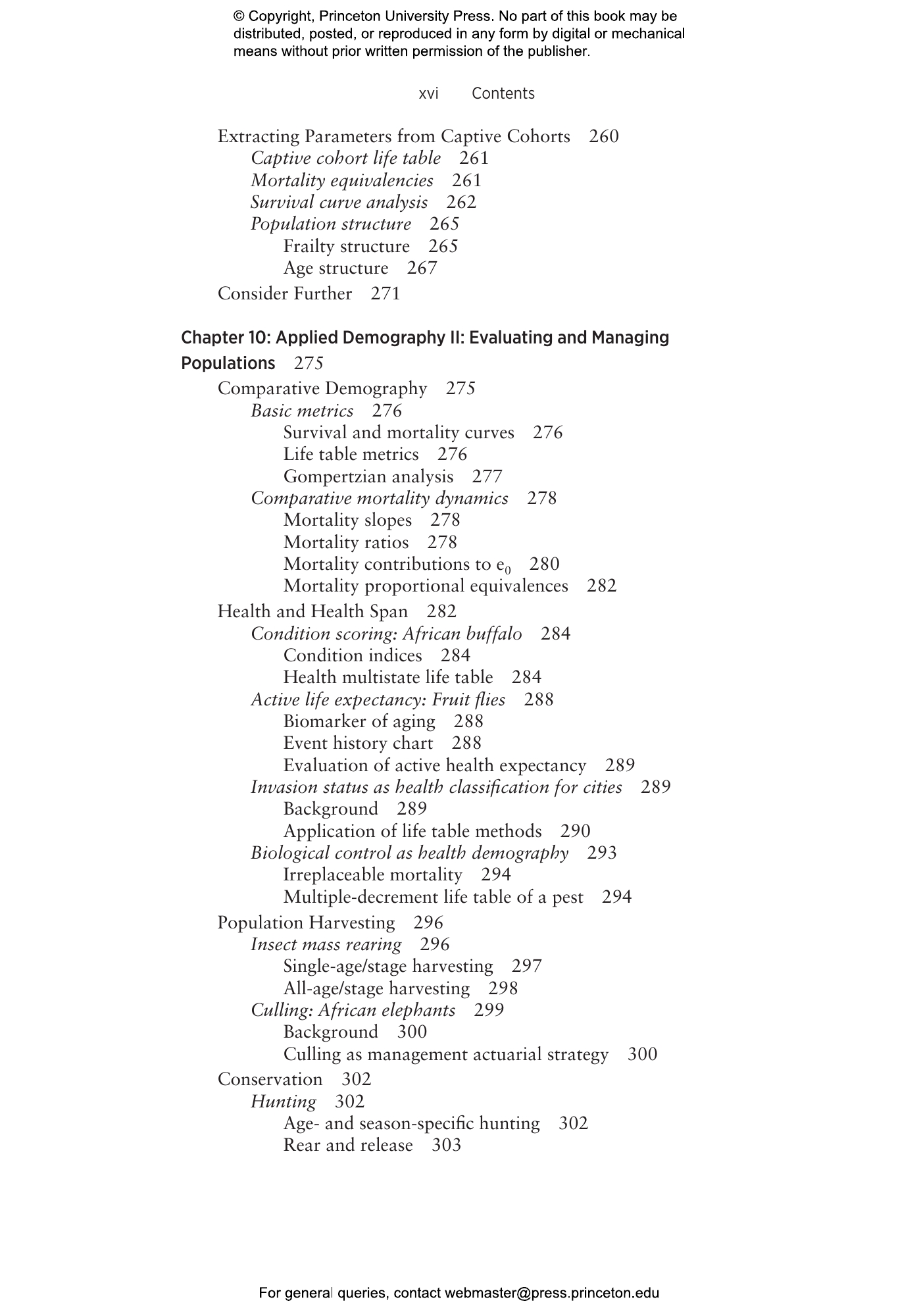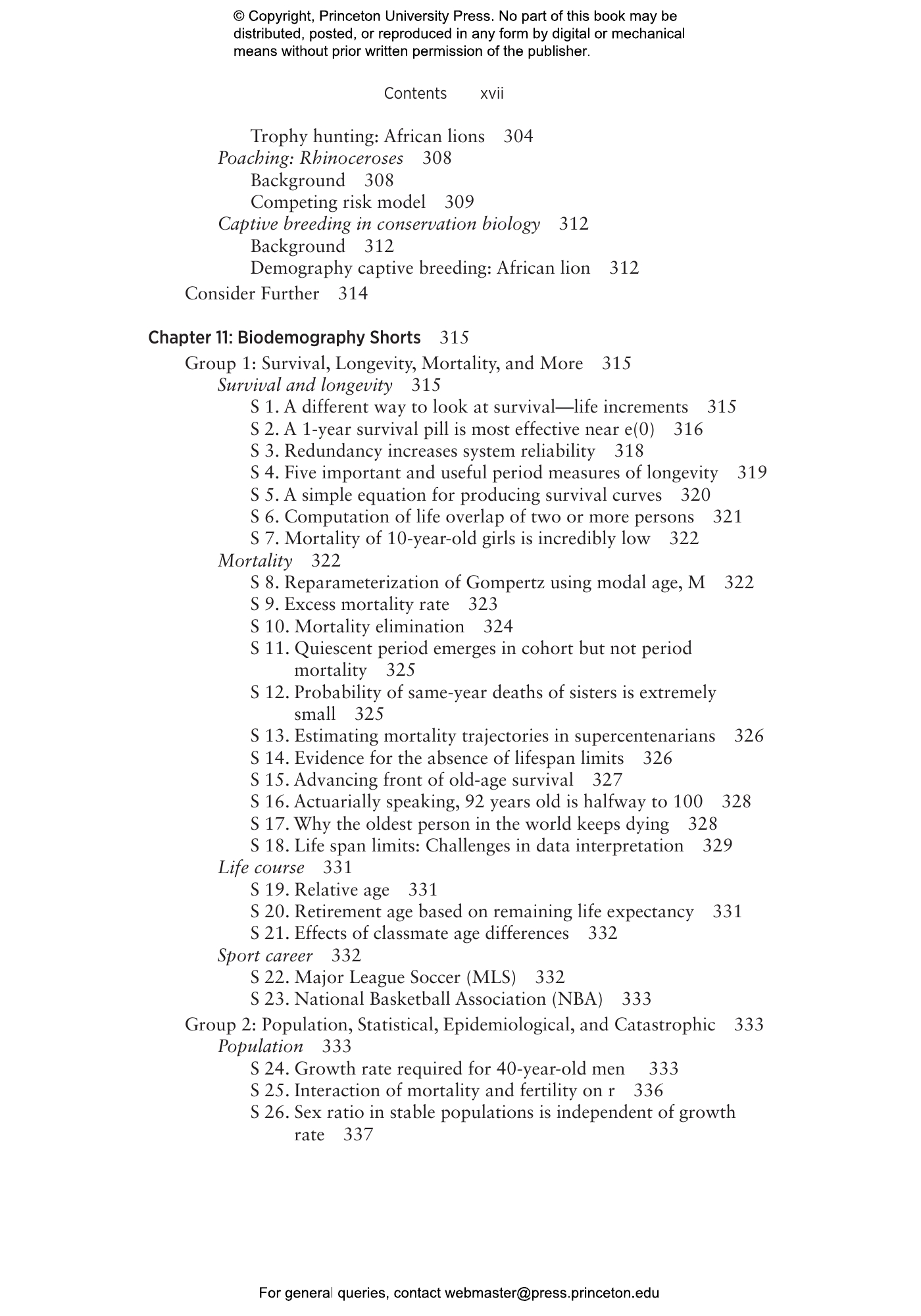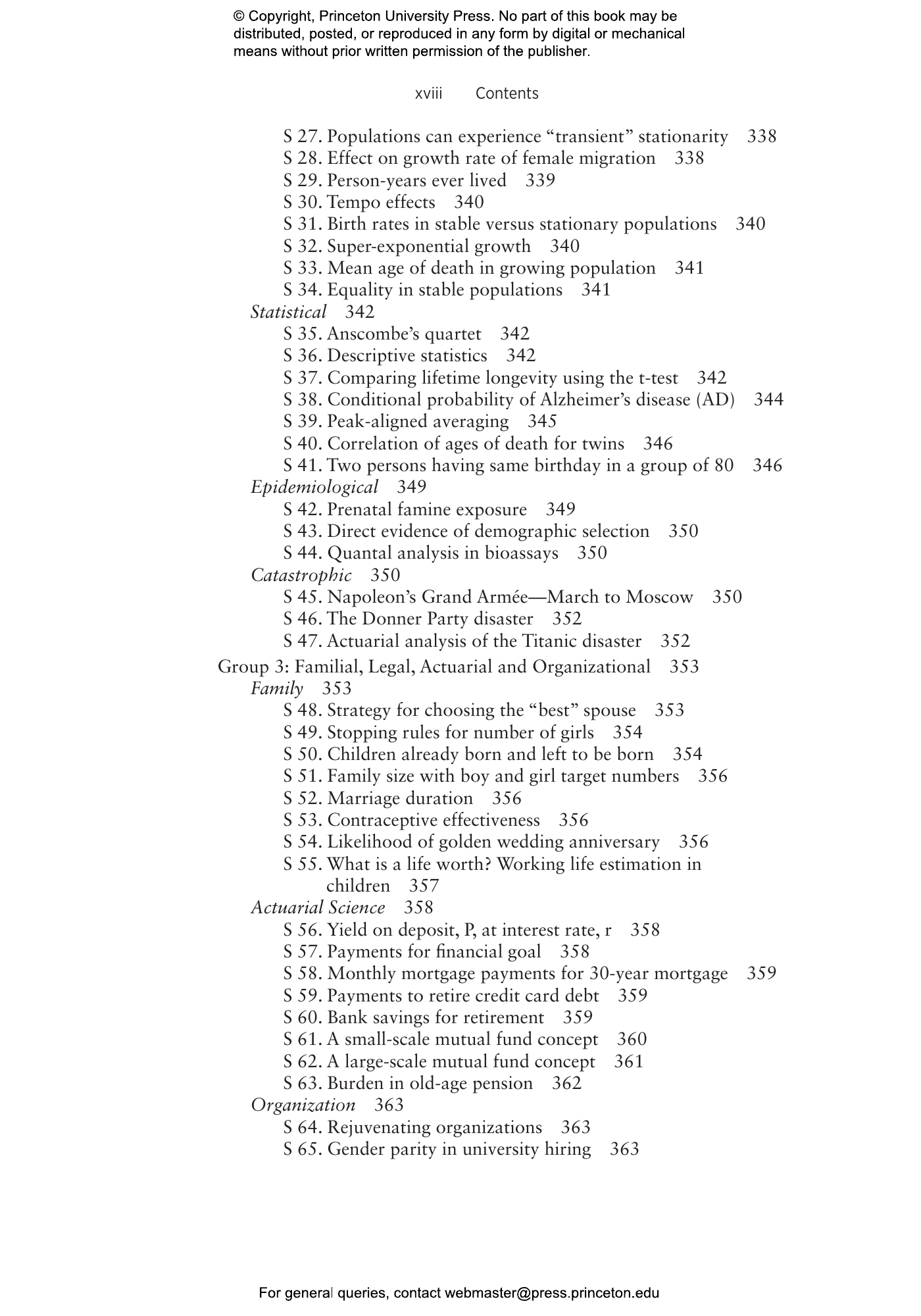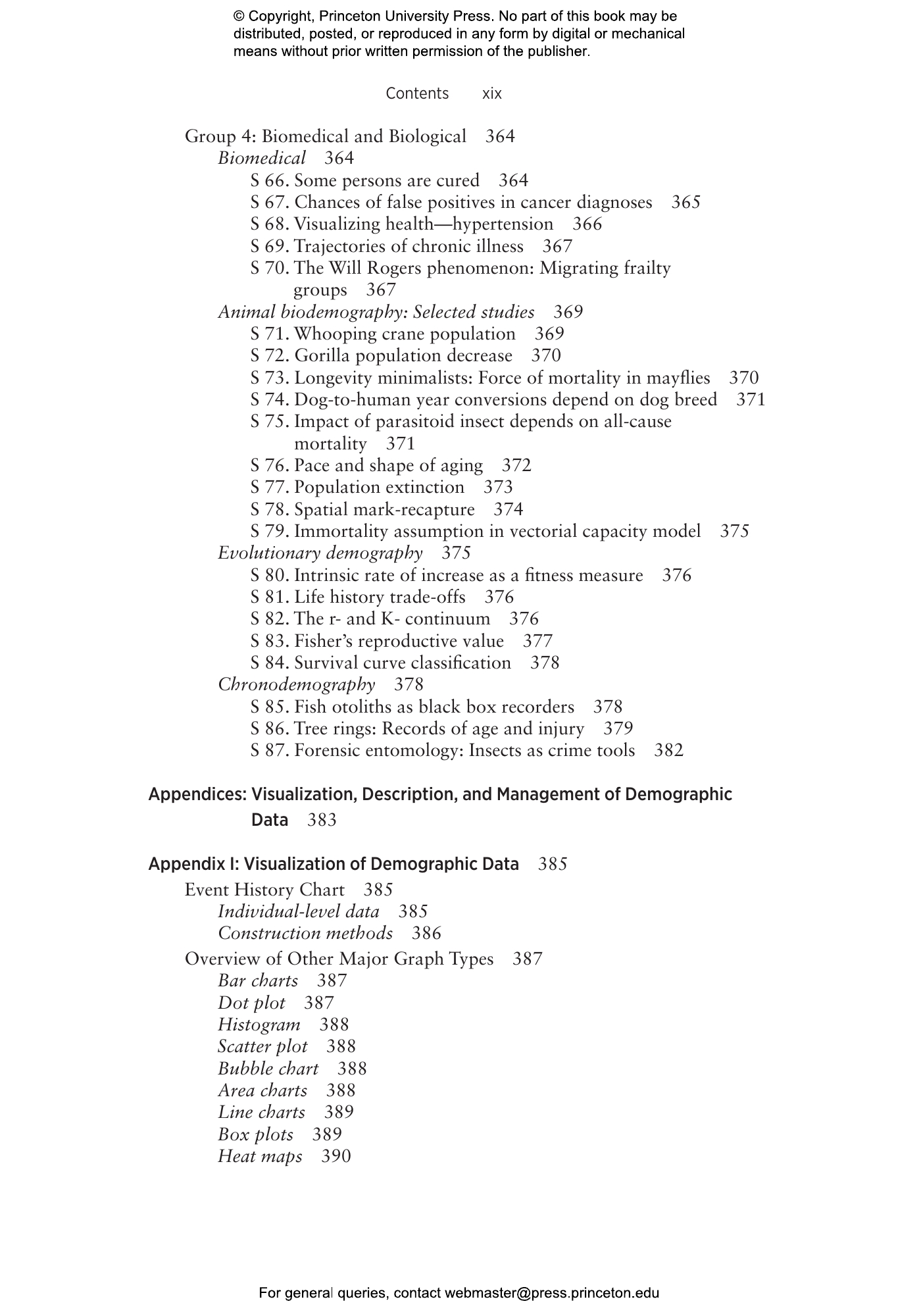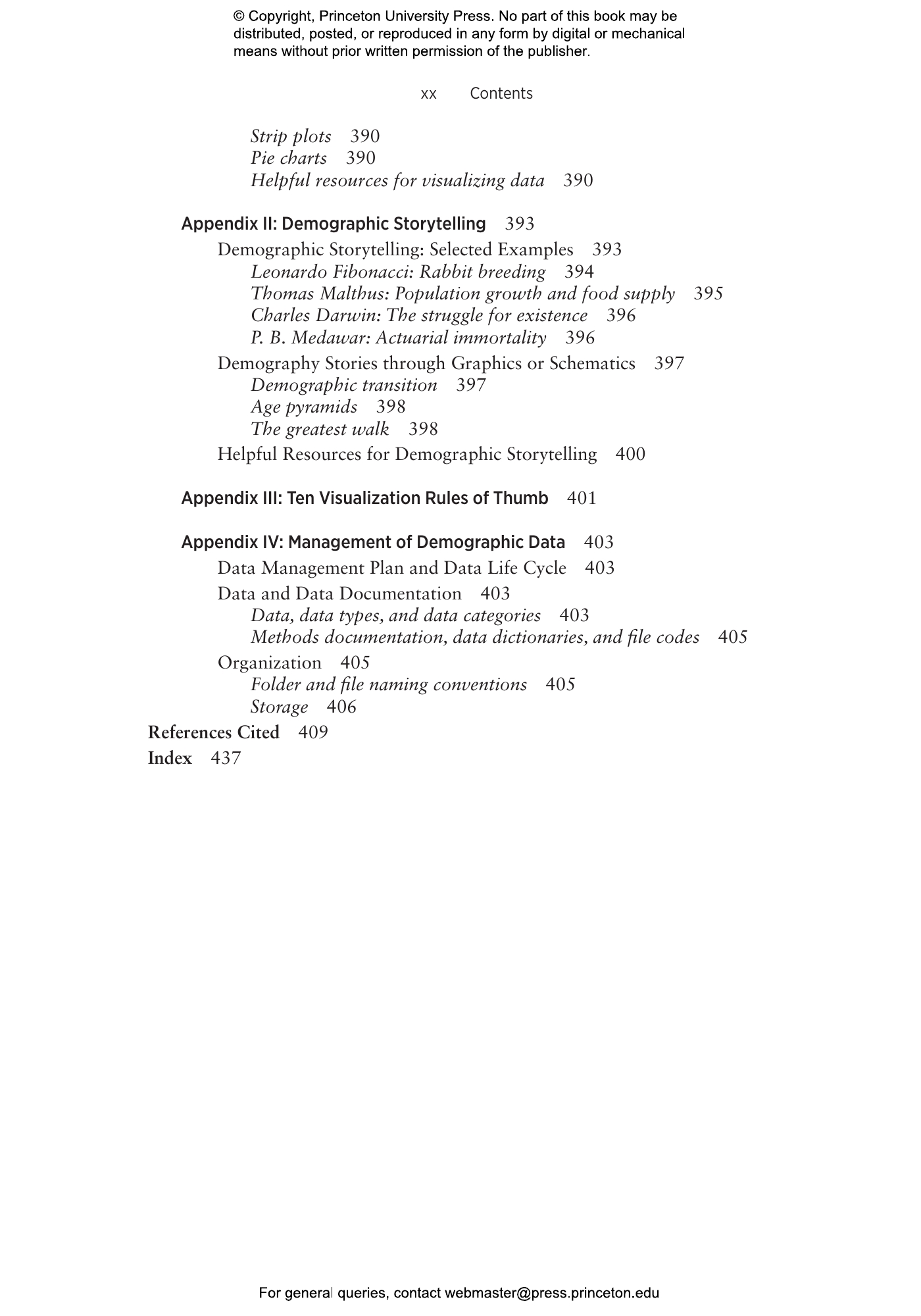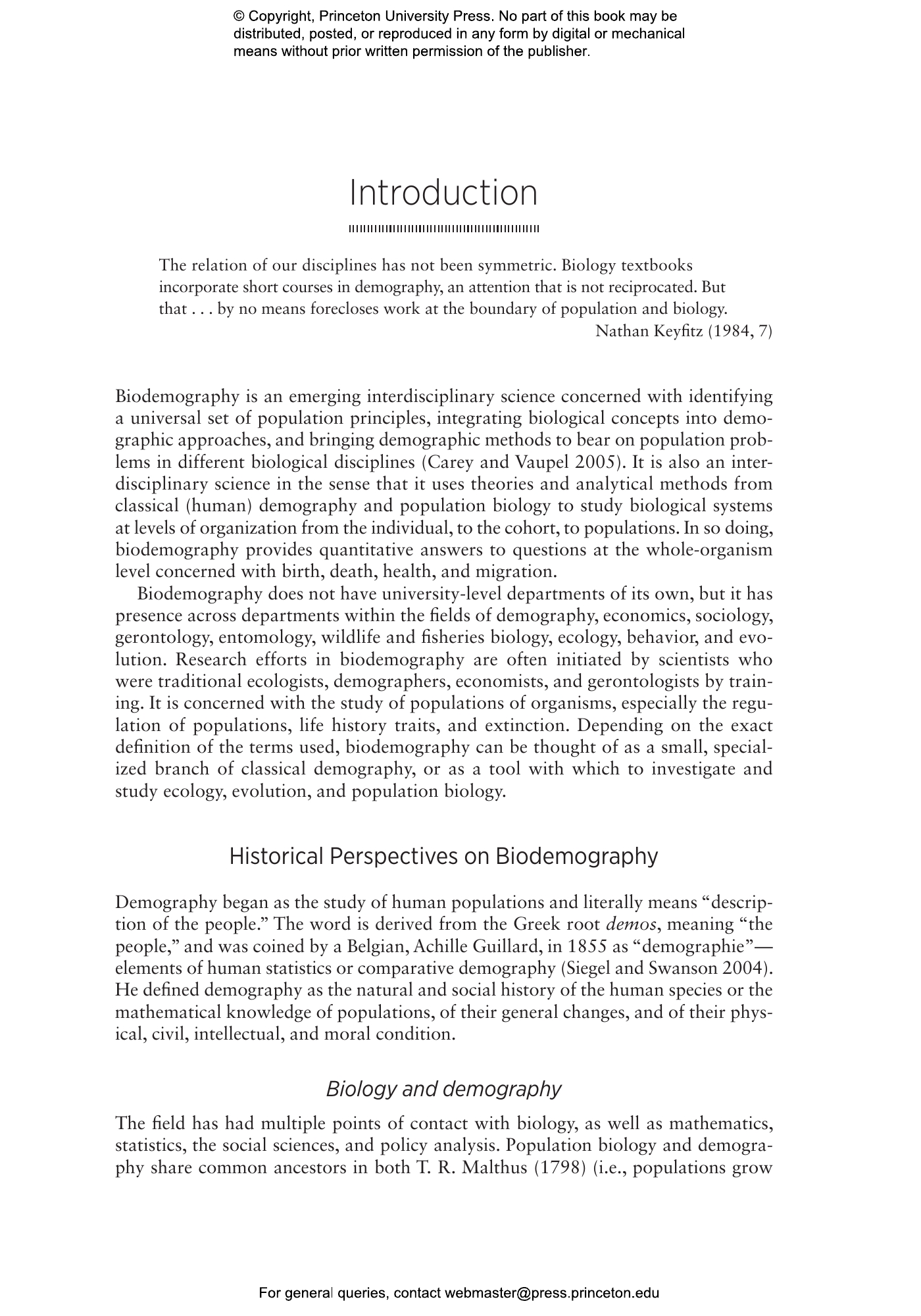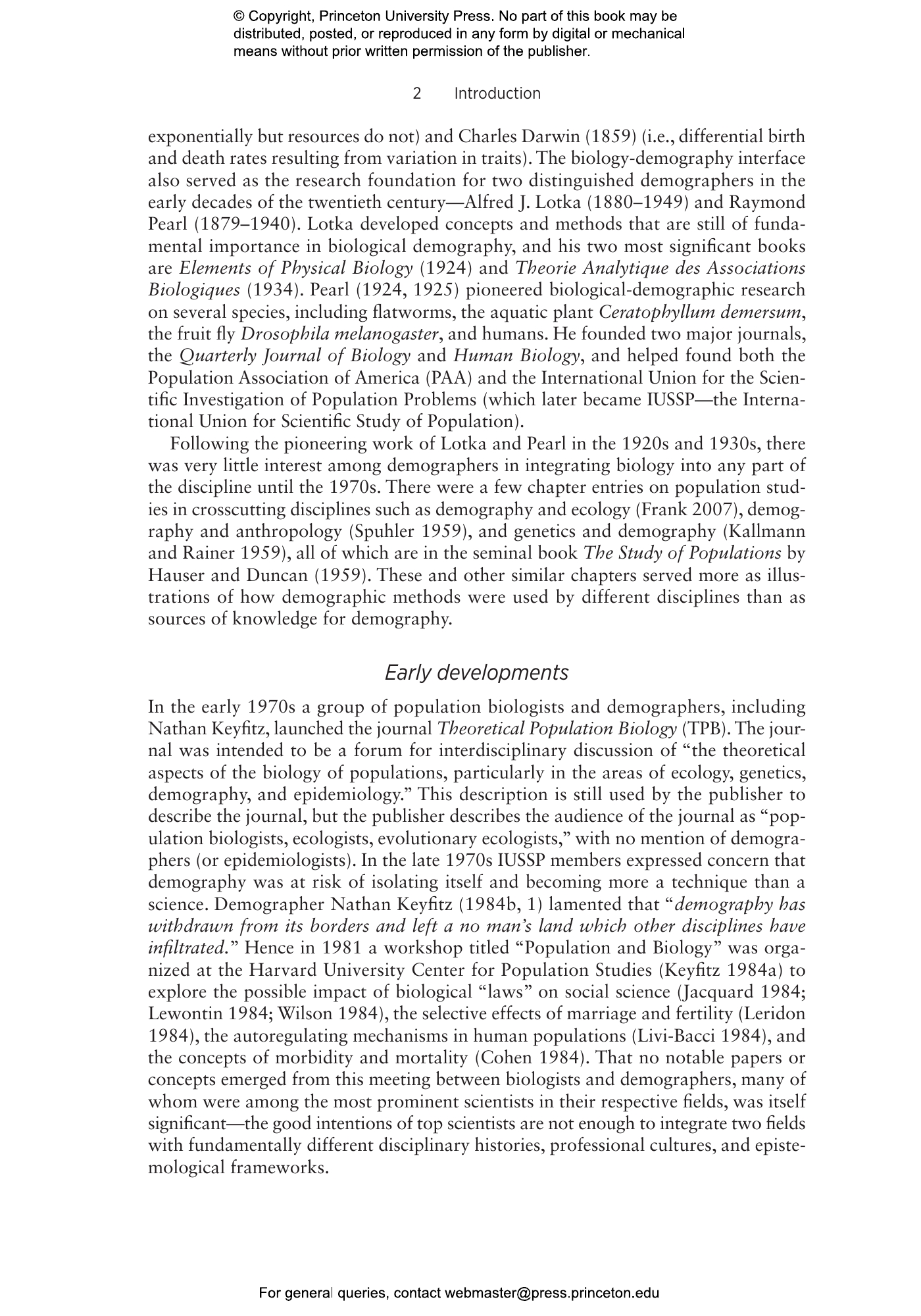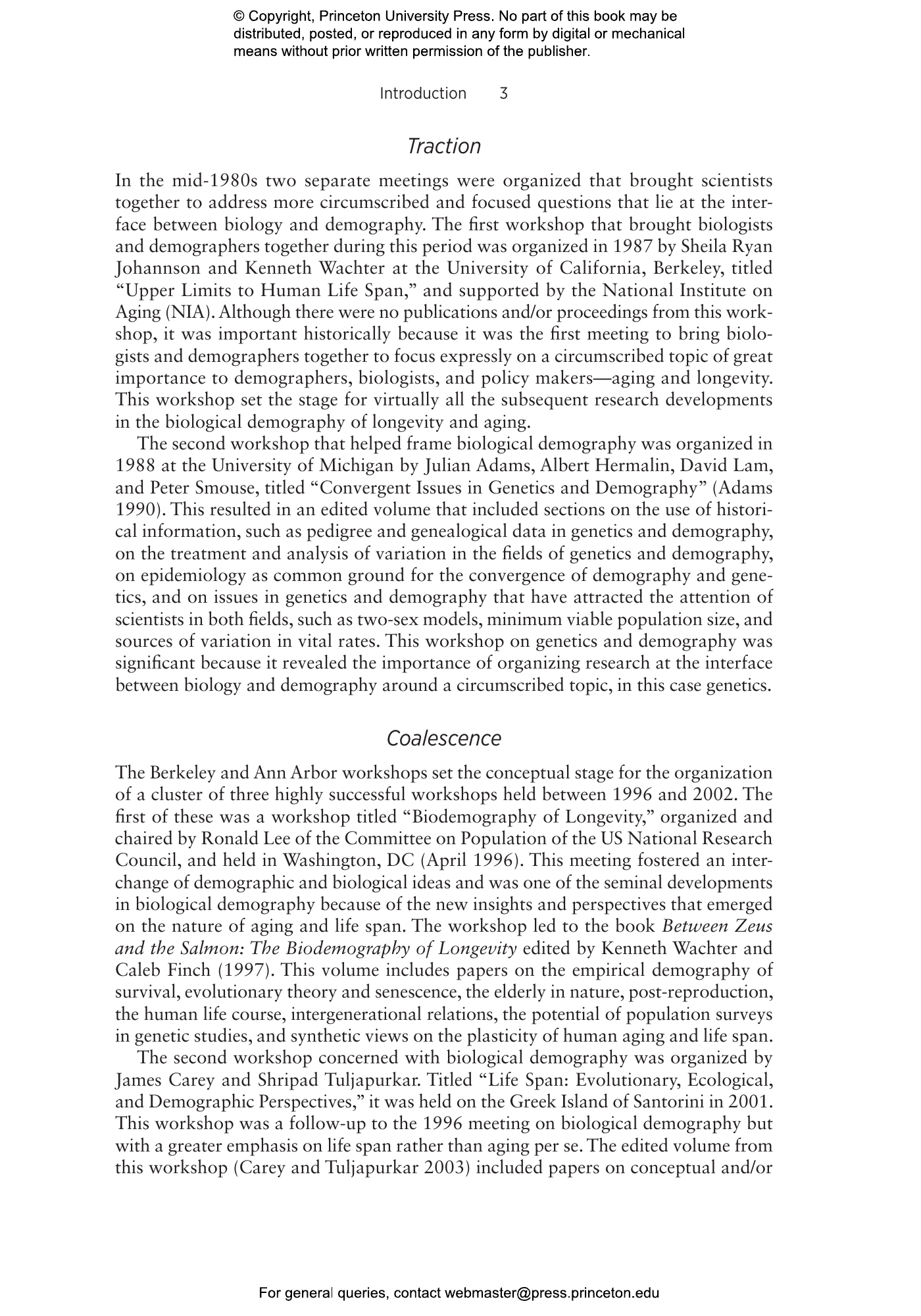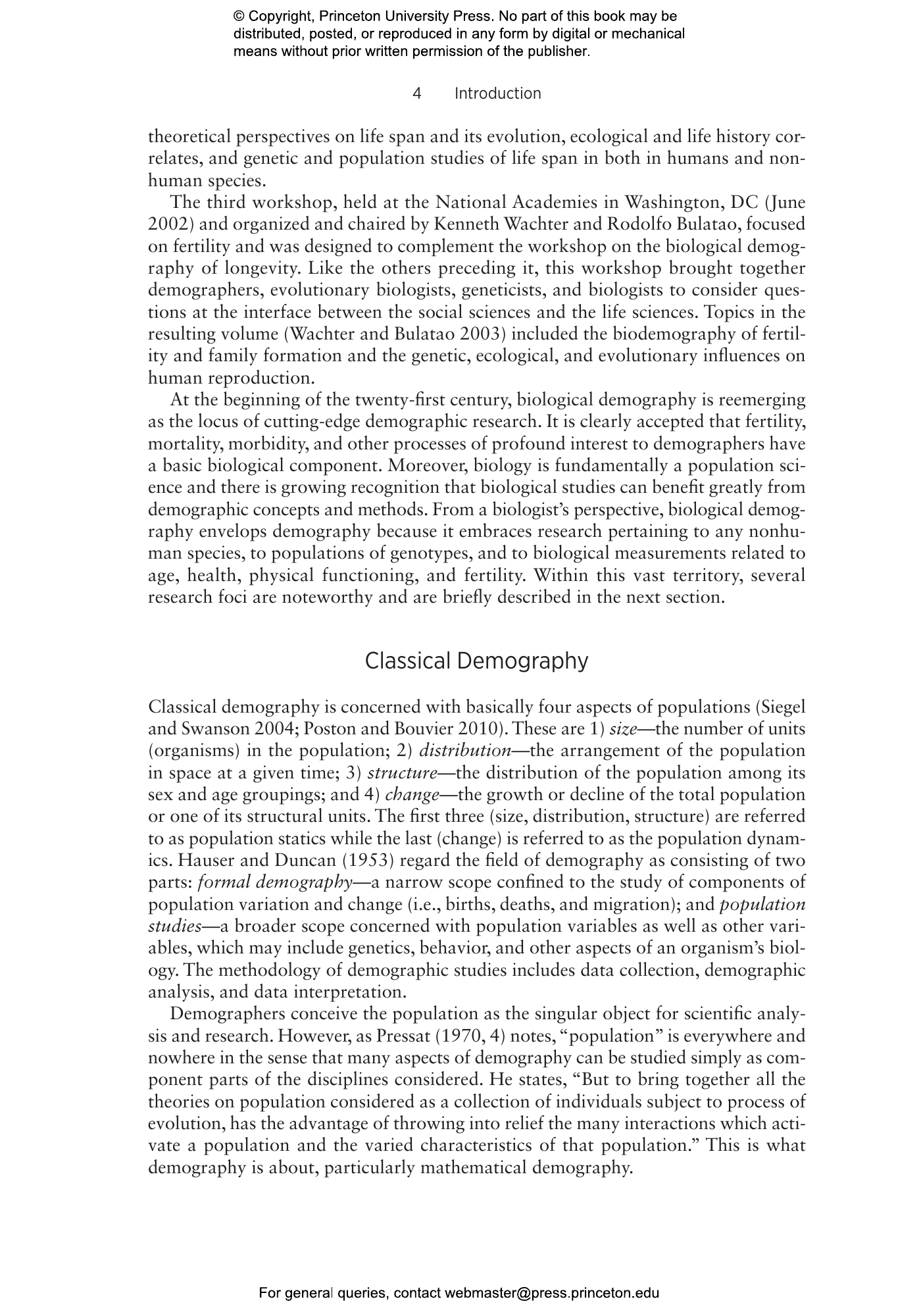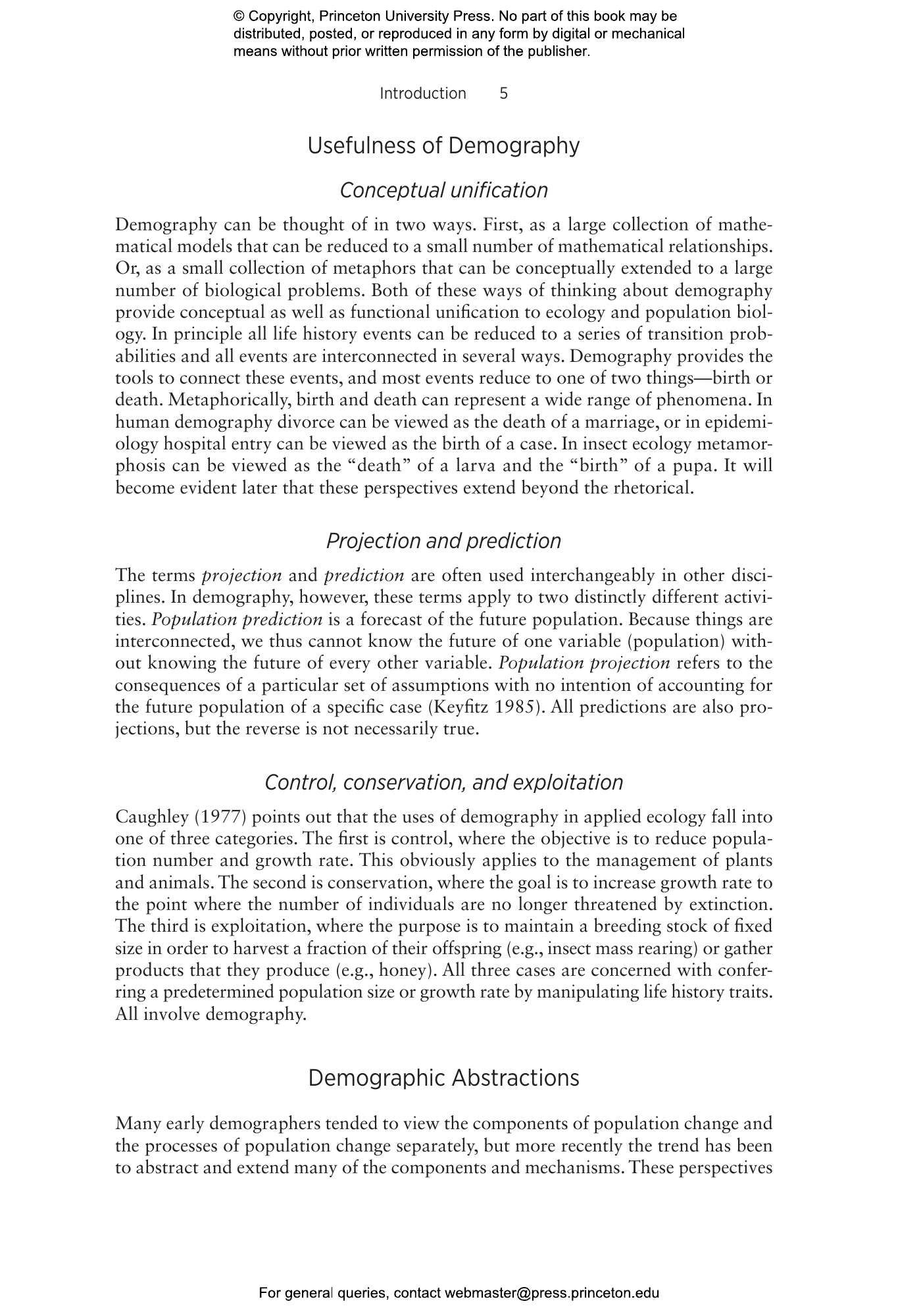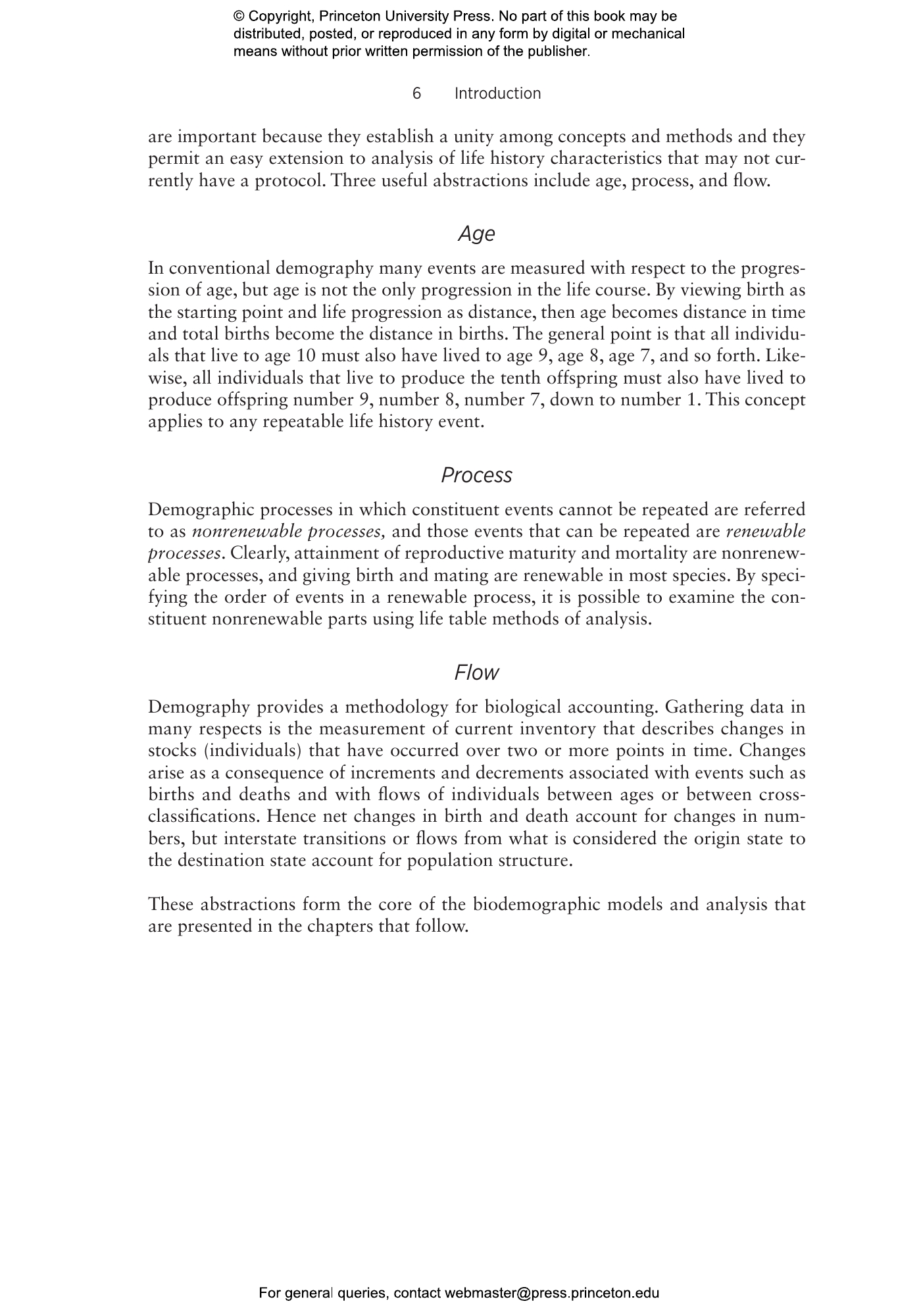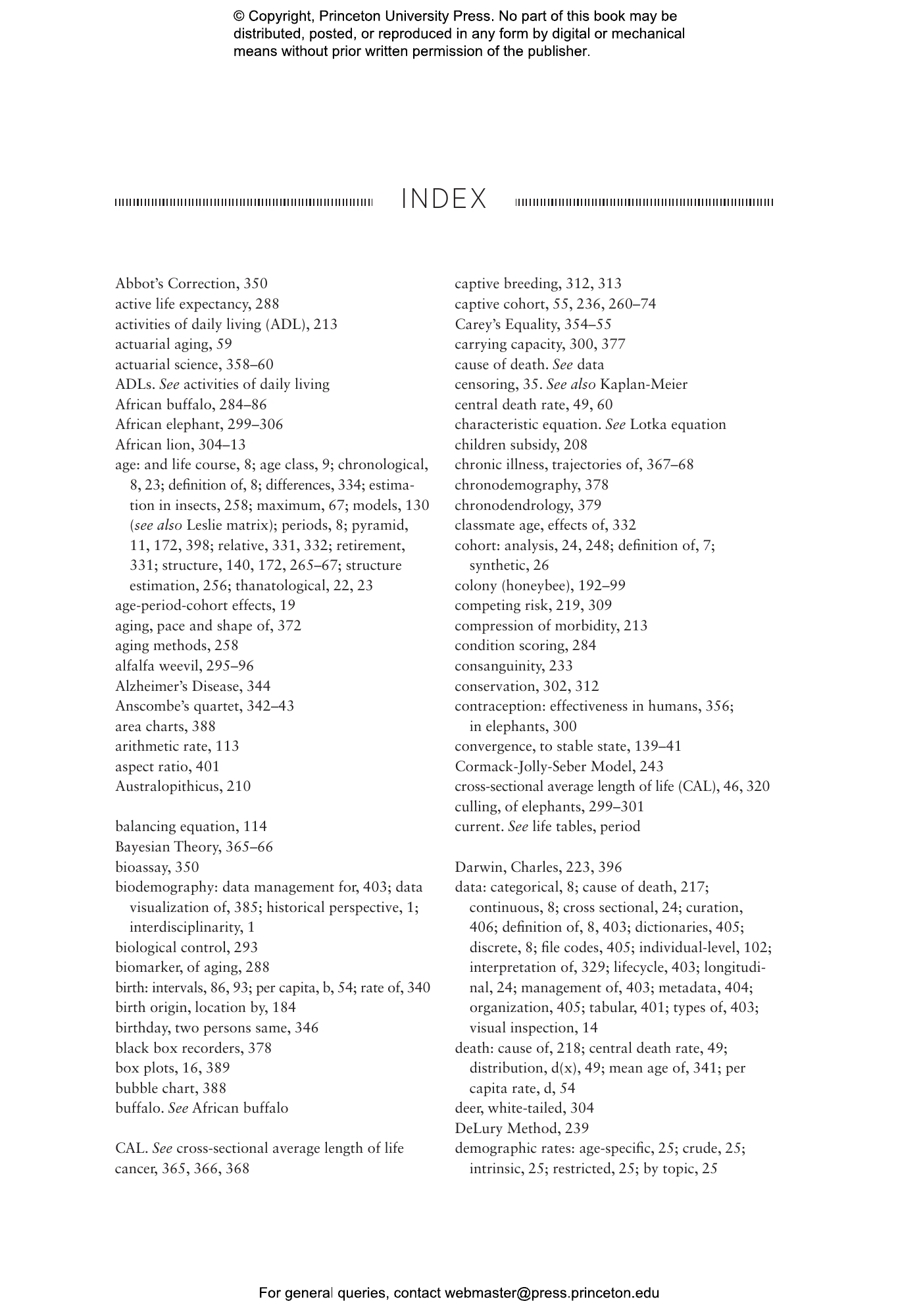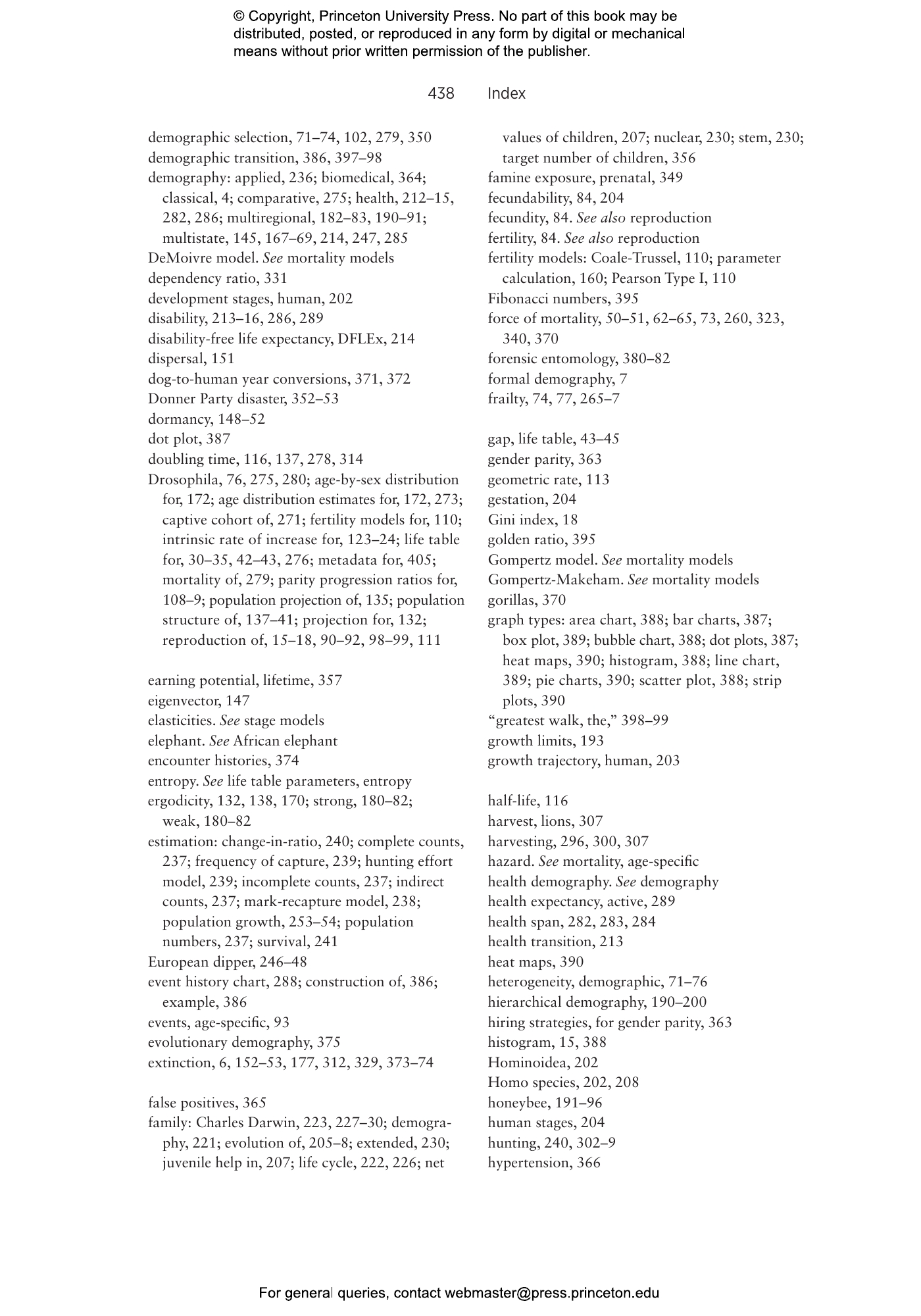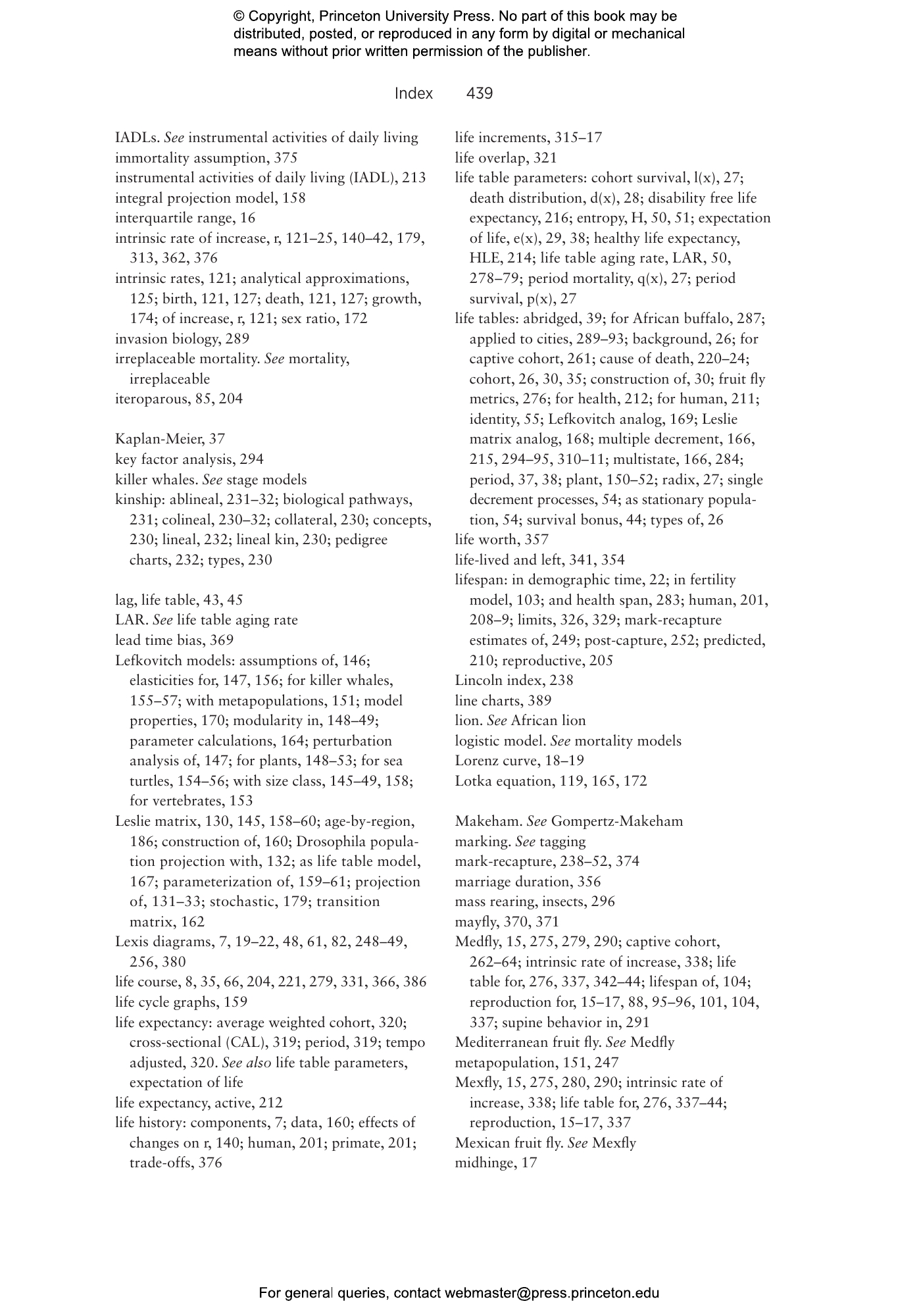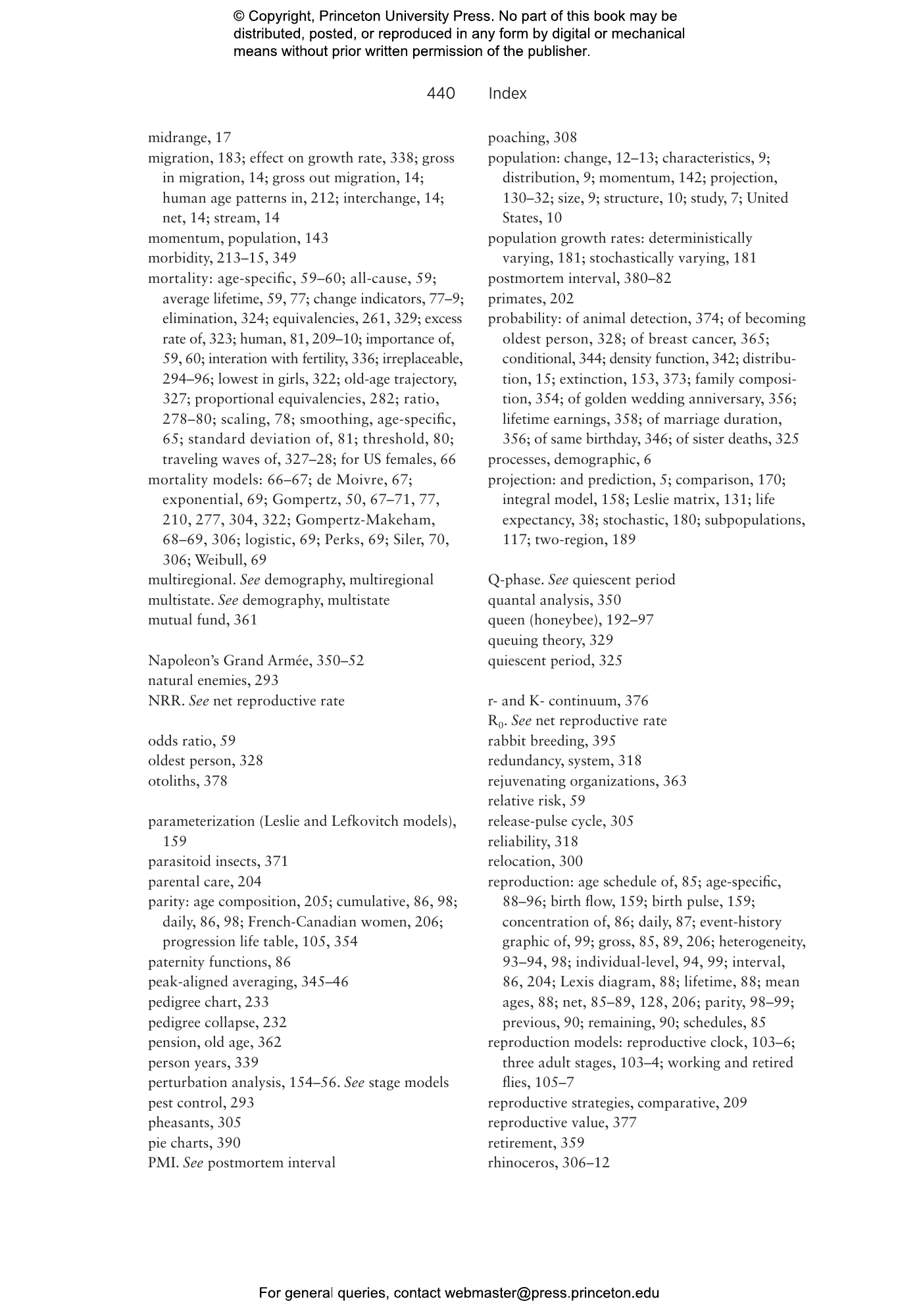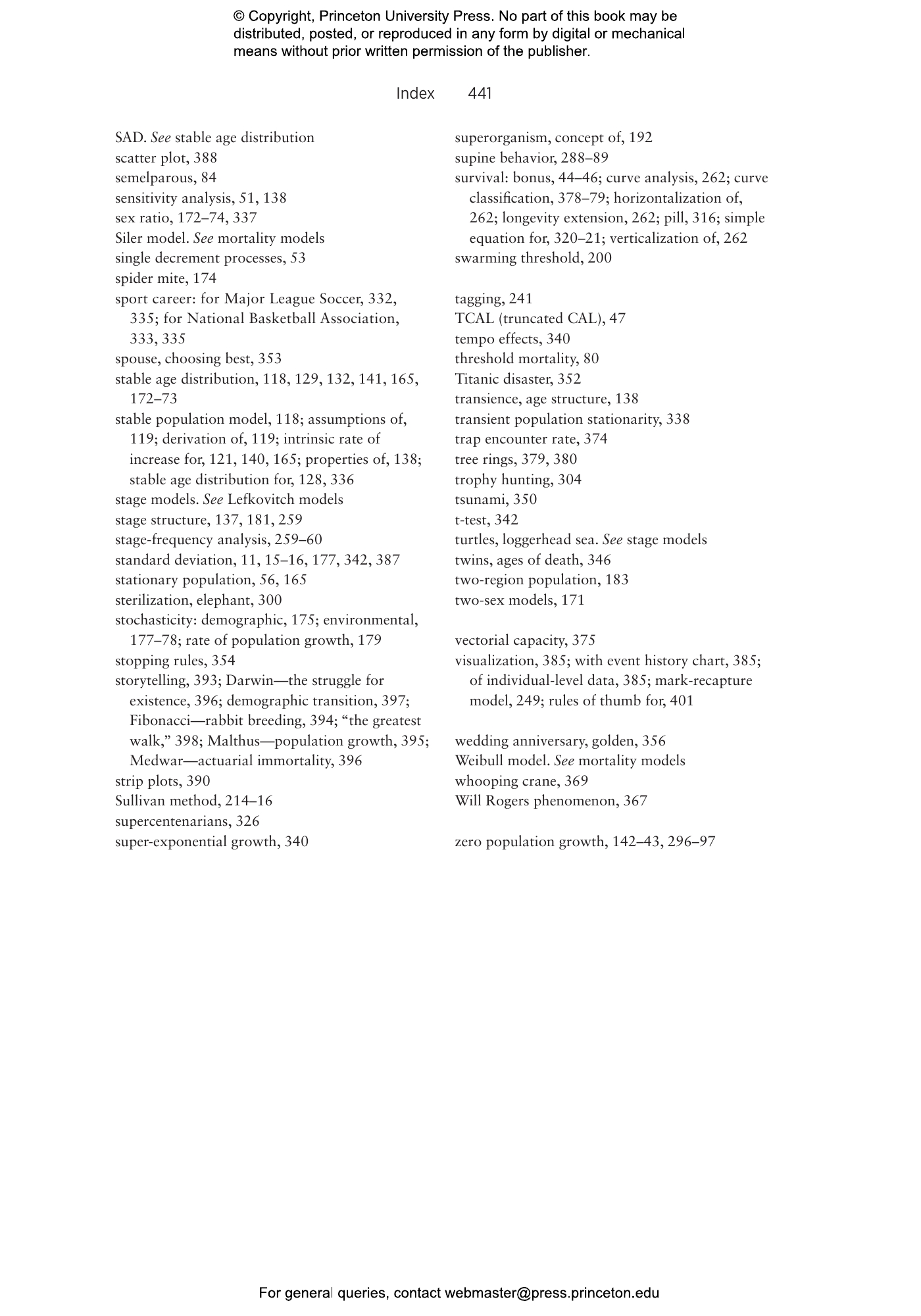This book provides a comprehensive introduction to biodemography, an exciting interdisciplinary field that unites the natural science of biology with the social science of human demography. Biodemography is an essential resource for demographers, epidemiologists, gerontologists, and health professionals as well as ecologists, population biologists, entomologists, and conservation biologists. This accessible and innovative book is also ideal for the classroom.
James Carey and Deborah Roach cover everything from baseline demographic concepts to biodemographic applications, and present models and equations in discrete rather than continuous form to enhance mathematical accessibility. They use a wealth of real-world examples that draw from data sets on both human and nonhuman species and offer an interdisciplinary approach to demography like no other, with topics ranging from kinship theory and family demography to reliability engineering, tort law, and demographic disasters such as the Titanic and the destruction of Napoleon’s Grande Armée.
- Provides the first synthesis of demography and biology
- Covers baseline demographic models and concepts such as Lexis diagrams, mortality, fecundity, and population theory
- Features in-depth discussions of biodemographic applications like harvesting theory and mark-recapture
- Draws from data sets on species ranging from fruit flies and plants to elephants and humans
- Uses a uniquely interdisciplinary approach to demography, bringing together a diverse range of concepts, models, and applications
- Includes informative “biodemographic shorts,” appendixes on data visualization and management, and more than 150 illustrations of models and equations
James R. Carey is Distinguished Professor of Entomology at the University of California, Davis, and Senior Scholar at the Center on the Economics and Demography of Aging at the University of California, Berkeley. Deborah A. Roach is Professor of Biology at the University of Virginia and past president of the Evolutionary Demography Society.
"An accessible and practical overview of the demographic approaches that may offer insights into a range of important biological questions."—Marlène Gamelon and Hannah Froy, Trends in Ecology & Evolution
"In their new book, [James R. Carey & Deborah A. Roach] provide an excellent introduction to the concepts and methods that form the foundation of biodemography."—Marlène Gamelon and Hannah Froy, Trends in Ecology & Evolution
"Biodemography deserves to prove itself a useful resource for both those taking their first steps in biodemography as well as for more experienced researchers seeking to broaden their horizons or reference a single resource. . . . The success of the book is in relating those equations to modern life and, in doing so, describing how we might better understand the risks, challenges and opportunities of the ways in which populations change through time."—Thomas H. G. Ezard, Biometrical Journal
"[An] excellent resource for demographers, population biologists, epidemiologists, and other professionals who study population-level outcomes."—K.R. Thompson, CHOICE
"At a time when concerns about biodiversity are great, this book is essential reading. Methodological advances in human demography in recent decades are often ignored in population biology and ecology. Biodemography builds a bridge between disciplines."—Jean-Marie Robine, coeditor of The Cambridge Handbook of Successful Aging
"Ecology and evolution are driven by who lives and reproduces and who doesn’t. In recent years, the field of biodemography has developed a rich corpus of concepts and methods to analyze and predict patterns of birth and death. This excellent book provides a much-needed overview of ideas and approaches that will aid researchers, from students immersing themselves in the subject for the very first time to seasoned professors wishing to learn modern approaches."—Tim Coulson, University of Oxford
"This accessible book provides a broad account of demography and its biological applications, with an overarching focus on life-history patterns and aging. Ideal for a range of undergraduate courses, it also covers topics not usually found in a single source, making it a useful resource for scientists in demography, public health, ecology, and evolution."—Shripad Tuljapurkar, Stanford University
"A novel introduction to formal demography for biologists."—Johan Dahlgren, University of Southern Denmark
Biodemography: A Complete Video Guidebook. Over 170 video mini-lectures on biodemography produced by UC Davis entomology professor and tephritid researcher, James R. Carey, are available on the website of UC Berkeley Population Sciences where he has a courtesy affiliation in the demography of aging. The videos cover nearly all of the content contained in his book:
Biodemography: An Introduction to Concepts and Methods. (2020. James R. Carey and Deborah A. Roach; Princeton University Press).
